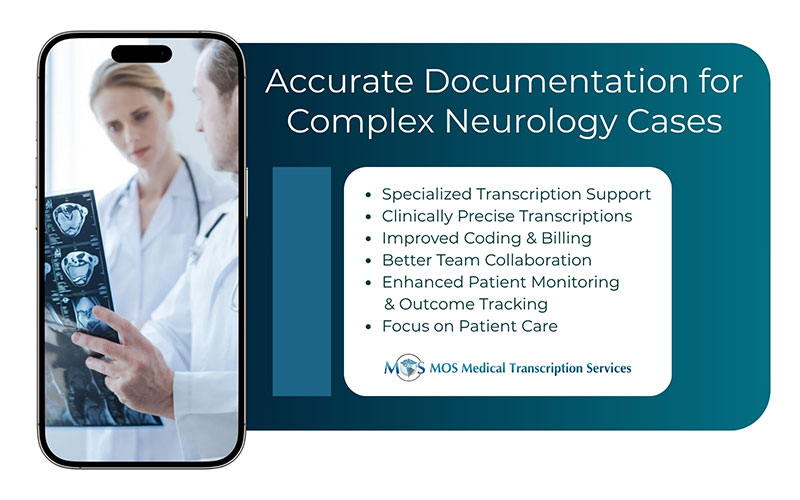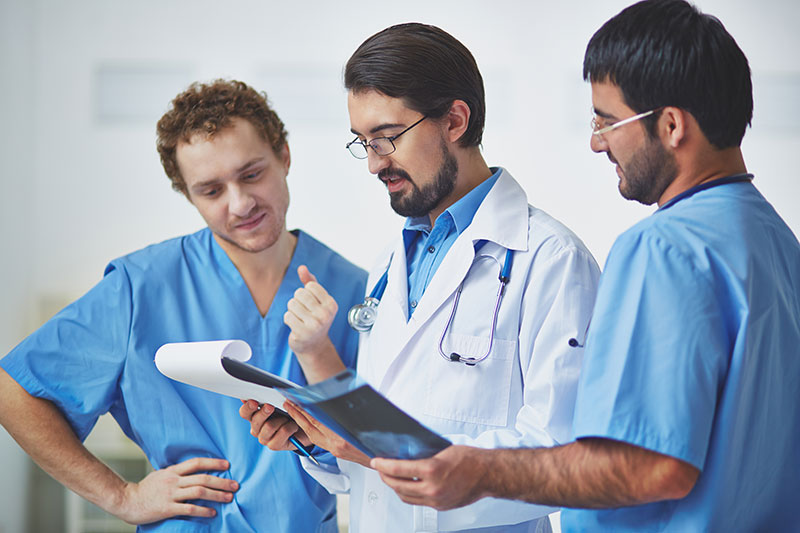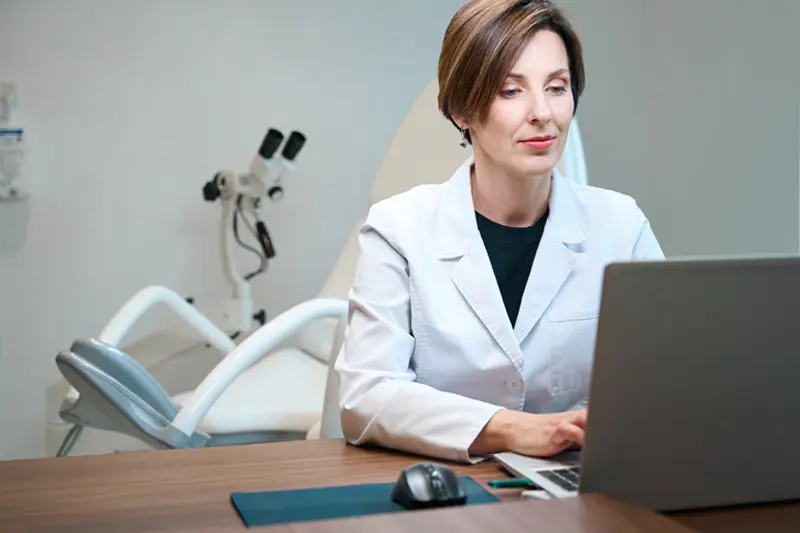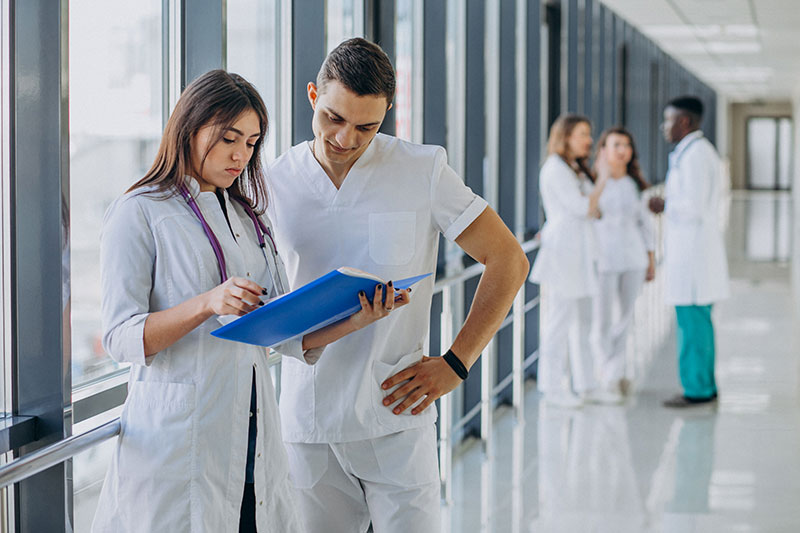
Table of Contents
The intersection of artificial intelligence and healthcare has opened new pathways to improved diagnostics, enhanced efficiency, and better patient outcomes. Among the areas most positively impacted is pathology transcription, a critical component of accurate diagnostic reporting. A medical transcription company now has access to intelligent tools that not only speed up documentation but also increase the precision of clinical reporting. At the core of this transformation lies AI in pathology transcription, which is reshaping the way pathology data is captured, analyzed, and applied in clinical settings, ensuring better patient care.
The Impact of AI on Patient Care Through Accurate Transcription
The impact of AI on patient care through accurate transcription cannot be overstated. Inaccuracies in pathology reports can lead to misdiagnoses, delayed treatments, or inappropriate therapies. AI’s role in minimizing these risks has been groundbreaking. With consistent, standardized transcription, clinicians can make better-informed decisions, directly translating to more personalized and effective patient care.
There are a broad range of AI tools designed to enhance diagnostic workflows and efficiency. These intelligent systems can scan pathology slides to quantify elements such as lymph node metastases, mitoses, inflammatory cells, or microorganisms, automatically flagging abnormalities and highlighting relevant data at sign-out. Some AI/ML models can even identify regions of interest within a slide or prioritize cases based on the content, helping streamline workload and improve turnaround time. Automation not only improves the transcription accuracy in pathology but also brings a new level of diagnostic confidence to routine and complex cases alike.
Another significant advancement is AI’s role in enabling secure and efficient remote collaboration. With digital transcripts and pathology imaging, healthcare providers can seamlessly share annotated reports and high-resolution slide images with specialists across different locations. This eliminates the need to physically transfer specimens, reduces turnaround time for expert opinions, and ensures that patients benefit from the collective expertise of global healthcare professionals, all while adhering to stringent data privacy and compliance regulations.
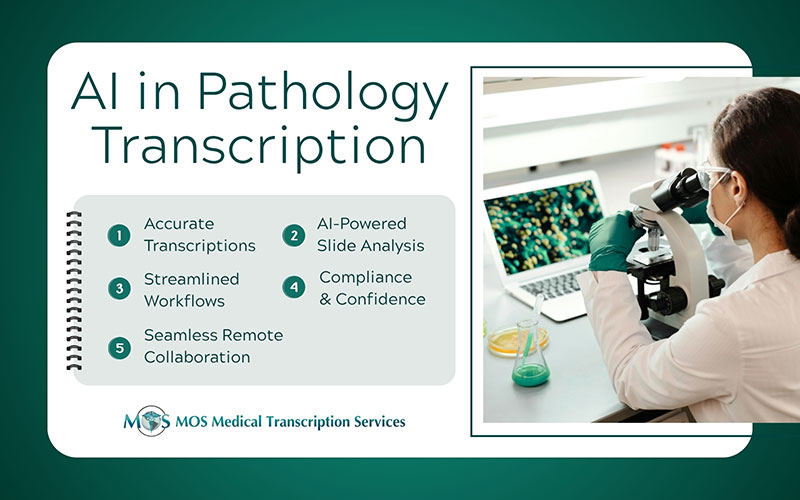
Enhanced Diagnostic Precision with AI Tools
Traditional pathology relies on manual slide examination, a process that is time-consuming and subject to human variability. However, the integration of AI technologies now enables pathologists to convert glass slides into high-resolution digital images and analyze them with algorithm-driven tools. This has significantly enhanced transcription accuracy, particularly by highlighting microscopic patterns that are often difficult for the human eye to detect.
Through pathology report automation, AI systems can extract key data points, identify cellular structures, and flag abnormalities, offering pathologists an augmented layer of interpretation. As a result, the diagnostic process becomes not only faster but also more reliable, supporting early and accurate disease detection.
AI Improves Accuracy in Pathology Transcription
Advanced AI tools are equipped with machine learning models that have been trained on thousands of digitized pathology samples. This capability enables them to recognize and categorize various tissue structures, abnormal cells, and even subtle biomarkers.
Here’s how AI improves accuracy in pathology transcription:
- Reduces transcription errors by automatically converting spoken or dictated content into structured, error-free reports.
- Suggests terminology and phrases consistent with medical guidelines, ensuring uniform documentation.
- Provides quantitative data that supports diagnostic conclusions, particularly in oncology, infectious diseases, and autoimmune disorders.
Better Workflow with Automated Transcription in Healthcare
Time efficiency is a major concern in pathology labs. AI-based systems offer automated transcription in healthcare, streamlining every step from case review to final reporting. Automated speech recognition, natural language processing, and auto-tagging features allow transcriptionists and pathologists to focus on analysis rather than repetitive documentation tasks.
Key workflow benefits include:
- Automated pre-review of digital slides to prioritize urgent cases.
- Seamless integration with Laboratory Information Systems (LIS).
- Smart routing of reports based on pathologist expertise, availability, and workload.
This automation ultimately leads to faster turnaround times, ensuring timely diagnoses and treatments.
Better diagnostic precision with AI tools, improved accuracy in transcription, and streamlined workflows through automated transcription in healthcare collectively lead to faster, more reliable, and consistent clinical documentation. These advancements reduce the risk of errors, enable timely diagnoses, and ensure that patients receive the most appropriate and effective care. By optimizing every step of the pathology process, AI directly contributes to better patient outcomes and overall healthcare efficiency.
Navigating Challenges While Embracing Progress
Organizations such as the College of American Pathologists (CAP) are actively researching and guiding AI implementation in clinical settings to ensure the technology is used ethically and effectively. In the September 2024 issue of CAP Today, the “From the President’s Desk” column explores the growing role of artificial intelligence (AI) in medicine, with a strong focus on pathology. Although AI tools have been around since the mid-1990s, many pathologists remain cautious about their broader implications. The author draws parallels between current concerns about AI and earlier skepticism toward technologies such as immunohistochemical staining and molecular genomic analysis—both of which ultimately strengthened, rather than diminished, the role of pathologists.
AI systems are designed to do more than just assist pathologists–they expand their capabilities by identifying and interpreting patterns that may not be visible to the naked eye or detectable using conventional tools. While AI has the potential to enhance the profession, its integration comes with hurdles, ranging from quality control and regulatory compliance to costs and reimbursement issues. Importantly, optimal results are achieved through a synergy between human expertise and AI, not through technology alone. While AI excels at analyzing clinical and lab data, it still lacks the depth of clinical judgment and intuition that physicians bring to diagnosis and patient management.
With the support of a reliable medical transcription company, healthcare institutions can now leverage the power of AI to elevate their transcription processes, improve diagnostic accuracy, and ultimately enhance patient care. From pathology report automation to real-time collaboration and predictive analytics, the future of pathology is intelligent, efficient, and profoundly patient-centered.

